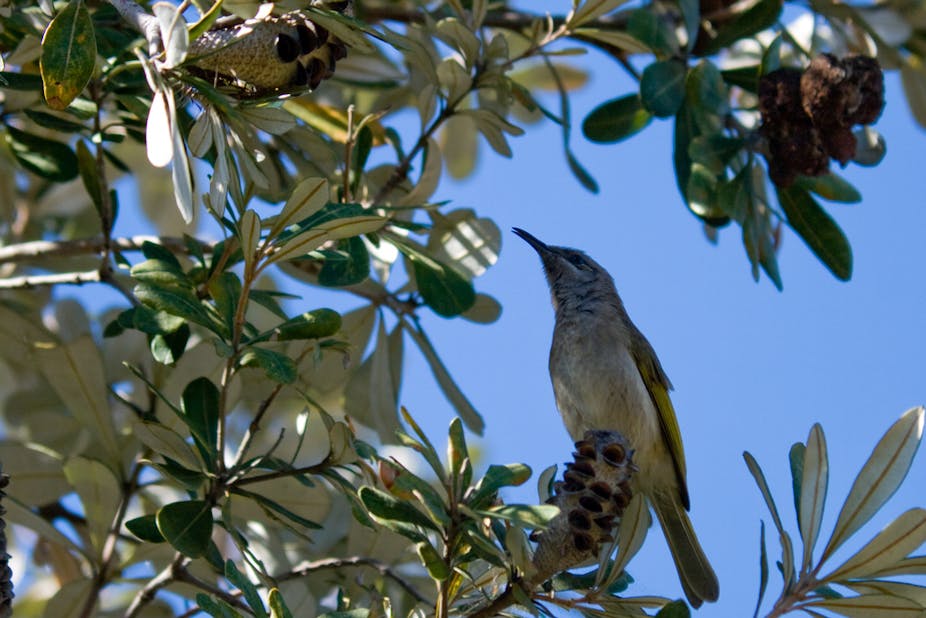One of my most vivid and lasting memories as an ecologist dates back to 1997. I was in the office of the then Environment Minister. I was told by the Minister and his minders that “we already knew everything we needed to know about restoring vegetation on farms” and “all we needed to do now was get the trees in the ground”.
Science was a dirty word then – much as it has now become in many areas of so-called environmental “debates” in Australia. Yet, after more a decade of detailed empirical science based on careful studies on hundreds of sites on hundreds of farms in south-eastern Australia, it is clear that back in 1997, there was in fact a lot that was important to learn about how to restore native vegetation and how to promote biodiversity conservation on farms.
Scientific research by The Australian National University and other universities, CSIRO, and organisations like Catchment Management Authorities, Greening Australia and Landcare, is helping to demonstrate why vegetation restoration is important on farms. It is identifying the features of good plantings for wildlife (such as native birds and reptiles), and how assemblages of animals differ between plantings, natural regrowth woodland, and old growth woodland.
For example, it is clear that when we manage a property by taking steps such as fencing and controlling grazing, it leads to readily quantifiable changes in vegetation structure and cover. These changes in vegetation result in marked changes in the type and number of birds in the area¹.
We can also determine which kinds of birds will benefit from these kinds of management interventions – small-bodied, non-seed-eating species¹ such as flame robins, redcapped robins and rufous whistlers.
This may sound trivial to some people, but it is remarkable how infrequently the effectiveness of management interventions has actually been documented – not only in Australia but in many other parts of the world. Documenting the impacts of management interventions is fundamentally important for determining what constitutes good management practice and what does not. Indeed, this kind of knowledge should underpin the effective expenditure of the billions of dollars of funds dedicated annually to environmental management in Australia!

Recent research in the temperate eucalypt woodland belt of south-eastern Australia has indicated the type of native vegetation growing on farms makes a big difference to the types of birds that will be found. The bird assemblages typically found in old growth woodland differ significantly from those found in plantings and those in areas of natural regrowth. Interestingly, birds of conservation concern are most likely to occur in plantings and regrowth rather than old growth.
This does not mean that old growth woodland has no conservation value. Far from it. Rather, it is critical for landholders to manage the range of vegetation on their farms to make sure there is habitat for a wide range of native species. This is especially important for the improved management of regrowth woodland which is often regarded as “sh*t” country by some landholders and targeted for clearing.
Yet other scientific work has helped uncover what makes a good planting for wildlife. Good plantings - those that support the highest diversity of native birds - will typically be:
- block-shaped (not narrow strips)
- in gullies or flat areas
- next to other plantings or areas of native woodland
- established around large old trees.
Plantings set up like this can provide valuable habitat for a range of bird species of conservation concern. Many of these species will breed successfully in these restored areas. Again, this kind of information is critical for guiding the effective expenditure of billions of dollars invested by Federal and State Governments as well as non-government organisations and farmers in on-farm conservation programs.
The key lesson from past myopia is that science (and particularly long-term ecological research) has a critical role to play in guiding effective natural resource management, including the effective restoration of native vegetation on farms. When we do the long-term work and establish good monitoring programs, we can actually demonstrate to taxpayers that their investments in repairing the environment have had some positive effects.
Good science and monitoring can uncover what needs to be done and how to do it, and quantify what is gained from particular investments (and how cost-effective those investments are). This is a key to gauging success not only for restoration programs on farms but in all environmental management.
References
- Lindenmayer, D.B., Wood, J. Montague-Drake, R., Michael, D., Crane, M., Okada, S., MacGregor, C., and Gibbons, P. (2012a) Is biodiversity management effective? Cross-sectional relationships between management, bird response and vegetation attributes in an Australian agri-environment scheme. (Biological Conservation)

